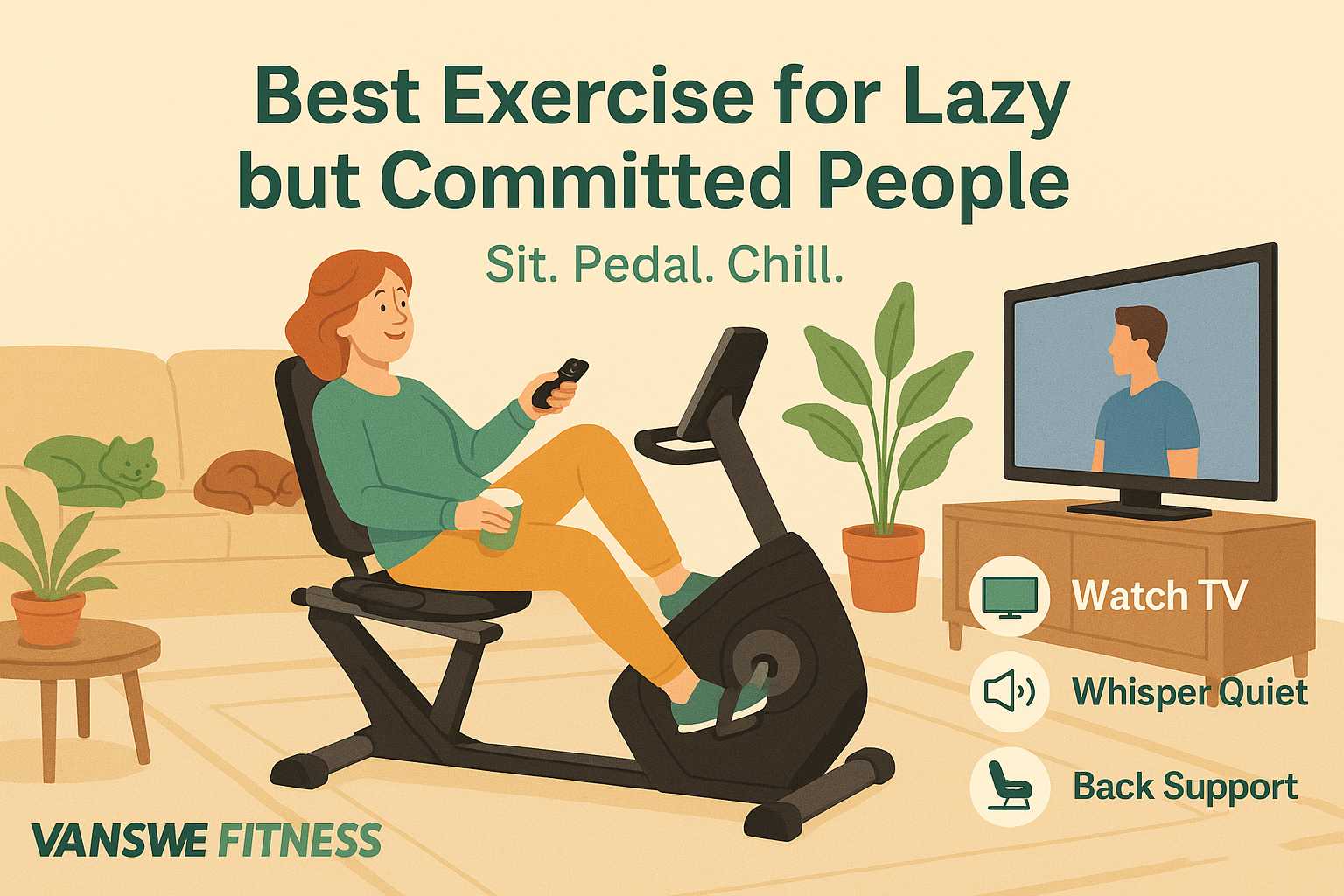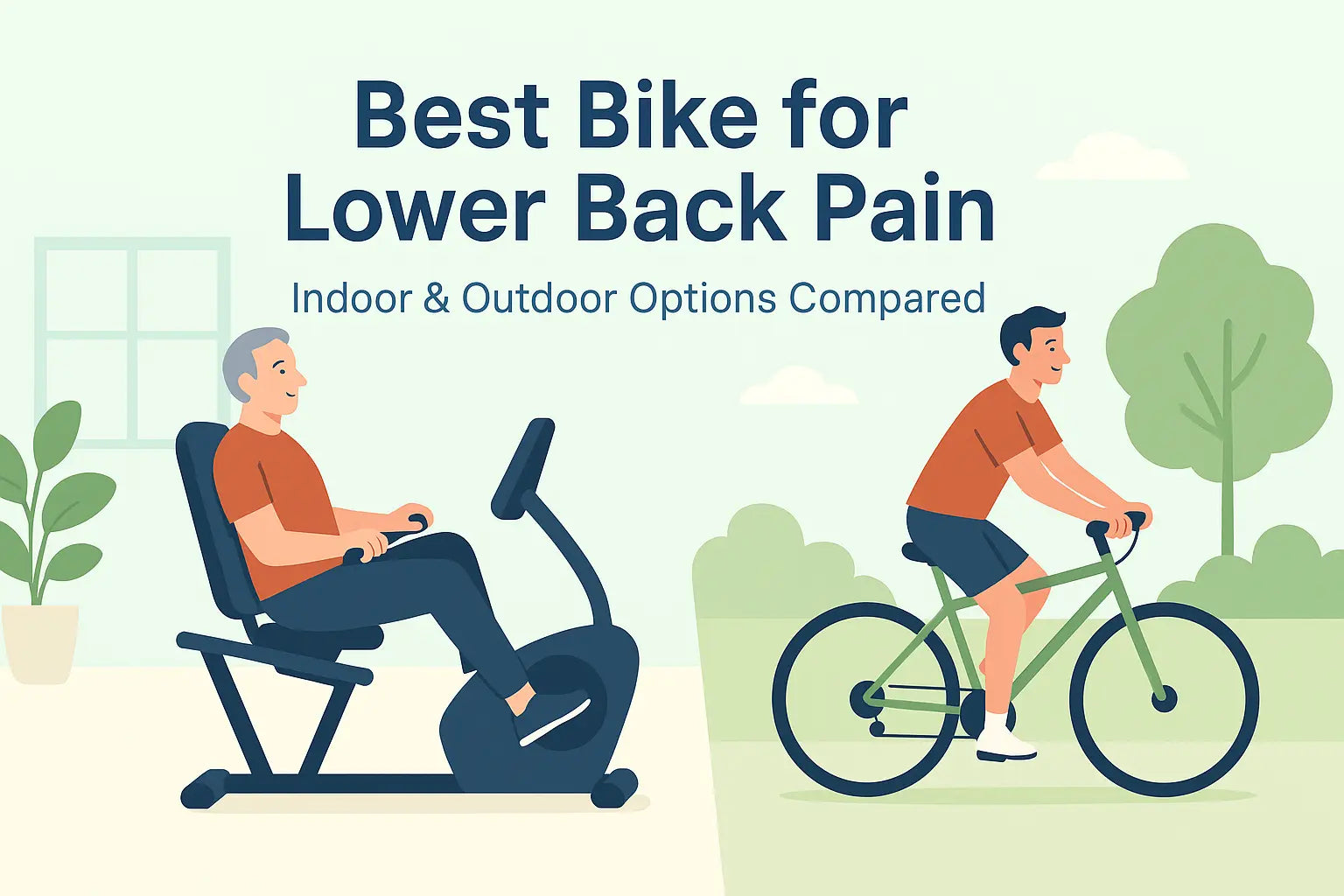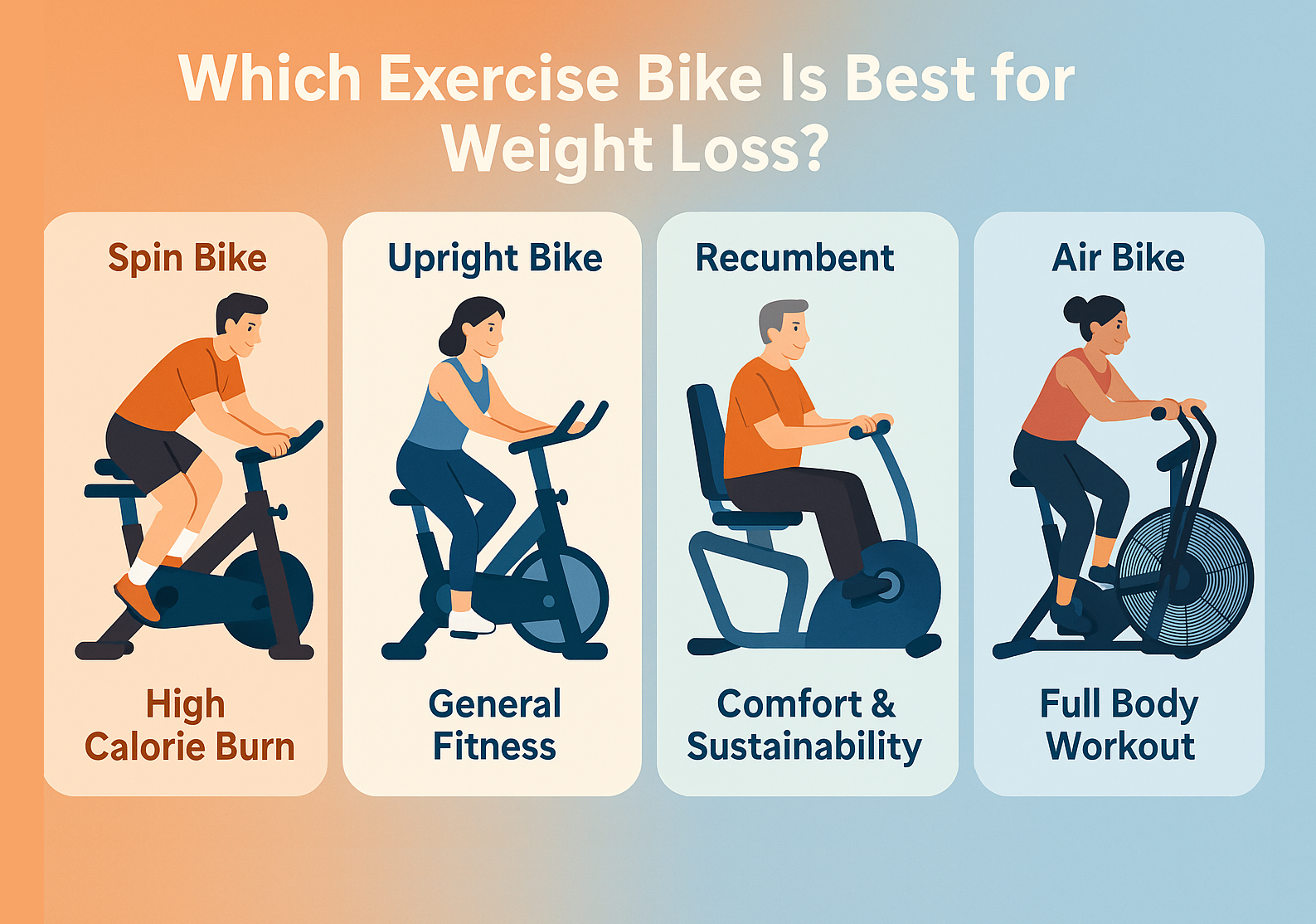Recumbent bikes have become increasingly popular among fitness enthusiasts, seniors, and individuals recovering from injuries. A recumbent bike is also known as a recumbent bicycle, and is part of a broader category called recumbent bicycles, which are gaining popularity for their comfort and accessibility. These machines provide a low-impact workout that is gentle on the joints. The main difference between a recumbent bike and a conventional bike is the reclined seating position, which changes the riding experience. Conventional bikes, with their upright design, are the traditional alternative to recumbent bikes. Their unique design offers a comfortable, low-impact workout experience that appeals to a wide range of users. In this article, we’ll explain what a recumbent bike is, highlight its key features and benefits, and help you decide if it’s the right choice for your fitness journey.
Source: A study published in the International Journal of Sports Physical Therapy [1] highlights that using a recumbent bike during rehabilitation significantly benefits joint range of motion, muscle strength, and cardiovascular fitness.
What Is a Recumbent Bike?
A recumbent bike is a type of bicycle where the rider sits in a reclined, almost laid-back position. Unlike upright bikes, which place the rider above the pedals, recumbent bikes feature a supportive backrest and pedals positioned in front of the rider. This ergonomic design reduces strain on the joints and back, making exercise more comfortable and sustainable.
Sitting in a recumbent bike provides enhanced comfort and support compared to other bike types. Recumbent riders benefit from the ergonomic seat, which helps reduce fatigue and allows for longer rides. In contrast, an upright bicycle and a traditional bicycle require a more forward-leaning position, which can be less comfortable for extended periods. Both recumbent bikes and upright bikes engage the same muscles in the lower body, such as the quadriceps and hamstrings, but the upright bike also involves more core and arm stabilization.
Source: Research from the University of North Texas [2] shows that the seat back angle of a recumbent bike significantly influences rider comfort and physiological responses, affecting the efficiency and experience of exercise.
Key Features of Recumbent Bikes
- Reclined Position: The seats are positioned lower to the ground and reclined, distributing body weight more evenly and enhancing comfort through ergonomic design.
- Supportive Backrest: Large, cushioned backrests offer lumbar support, reducing stress on the spine and improving overall seating comfort.
- Forward-Facing Pedals: The pedals are located in front of the body, allowing a full range of motion for the legs while minimizing impact.
- Low-Impact Design: Recumbent bikes provide a smooth, joint-friendly workout ideal for people with mobility or joint issues, especially those using a recumbent bike after knee replacement to support safe recovery and rehabilitation.
- Versatile Models: They are available in both indoor stationary versions and outdoor road designs with two or three wheels. Some recumbent bikes feature a longer wheelbase, which increases comfort and stability, making them ideal for sightseeing and leisure riding.
These key points contribute to seven major recumbent bike benefits. Recumbent bikes can be configured with either rear wheel or front wheel drive, offering riders a choice in drivetrain options. Additionally, many recumbent bikes can be equipped with racks, panniers, or custom bags to carry gear, making them suitable for longer rides and touring.
Comparison to Other Bikes
Recumbent bikes stand out from upright bikes, mountain bikes, and other conventional bicycles thanks to their unique design and riding position. Unlike upright bikes, which require riders to lean forward and place weight on their hands and wrists, recumbent bikes feature a reclined position that supports the back and distributes weight more evenly. This ergonomic setup significantly reduces pain and discomfort, especially for riders with joint or back issues.
When compared to mountain bikes, recumbent bike for home is not built for rugged off-road terrain but instead focus on providing a smooth, low impact workout on paved paths or level ground. Road bikes are designed for speed and aggressive riding positions, which can be less comfortable over long distances. In contrast, recumbent bikes prioritize comfort and are an excellent choice for riders seeking a relaxed, enjoyable ride without sacrificing exercise benefits.
For those considering a home gym, stationary recumbent bikes offer a convenient way to get a low impact workout indoors. While upright stationary bikes are also popular, recumbent bikes provide a more comfortable alternative, making them ideal for longer sessions and for riders who want less stress on their joints. Whether you’re new to cycling or looking for a better option for pain-free riding, recumbent bikes deliver a unique blend of comfort and fitness.
Types of Recumbent Bikes
There are several types of recumbent bikes designed to suit different preferences and riding needs. Long-wheelbase recumbent bikes feature an extended frame and a more reclined seat angle, offering exceptional comfort and stability for touring and long rides. These bikes are perfect for riders who want to cover greater distances with minimal fatigue.
Short-wheelbase recumbent bikes, on the other hand, have a more compact frame, making them agile and easier to maneuver in tight spaces or on short distances. This design is ideal for riders who need a bike that’s easy to transport or store.
For those seeking extra stability, some recumbent bikes come with three wheels, commonly known as recumbent trikes. These models provide added balance and confidence, especially for riders who may be concerned about tipping or maintaining balance at low speeds. When choosing a recumbent bike, consider factors like wheel drive (front or rear), reclined seat design, and handlebar position to find the best fit for your riding style and comfort.
What's a Recumbent Exercise Bike?
A recumbent exercise bike, also known as a recumbent indoor bike, is a stationary version of a recumbent bike designed specifically for indoor workouts. Instead of being used on the road, it stays fixed in one place, allowing users to pedal in a reclined position to improve cardiovascular fitness, burn calories, and strengthen lower body muscles. Users can easily adjust the resistance level to customize the intensity of their workout, making it suitable for any fitness level. Many recumbent exercise bikes also offer multiple workout programs, allowing users to vary their routines and target different goals. By pushing against higher resistance, riders can build muscle strength and endurance. Pushing oneself to higher resistance levels during workouts leads to better results and improved overall fitness. Thanks to its easy-to-use design, comfortable seating, and adjustable resistance levels, a recumbent exercise bike is a popular choice for home gyms, rehabilitation programs, and fitness centers. It provides all the benefits of a recumbent bike without requiring balance or outdoor cycling skills.
Key Points:
- Used indoors, typically in homes or gyms.
- Provides a low-impact, joint-friendly cardio workout.
- Ideal for beginners, seniors, and people with mobility challenges.
Source: A 2024 study published in Medicine and Science in Sports and Exercise [3] confirms that recumbent cycling provides significant benefits for seniors, improving cardiovascular endurance, muscle strength, and balance while minimizing joint stress.
Benefits of Using a Recumbent Bike
Recumbent bikes offer a range of benefits that make them a popular choice for riders of all fitness levels (Related Article: Is Is Recumbent Bike Good for You?). The reclined position and ergonomic design help reduce pressure on the joints, saddle, and handlebars, making exercise more comfortable and sustainable. This natural position allows riders to engage their core muscles while providing a low impact workout that’s gentle on the back, hips, and knees.
Because recumbent bikes support the body and minimize stress on sensitive areas, they are an excellent option for those who experience pain or discomfort on traditional bicycles. The design also makes it easier to maintain proper posture, reducing the risk of strain or injury during longer rides. Whether you’re looking to improve your overall fitness, recover from an injury, or simply enjoy a more comfortable cycling experience, recumbent bikes provide an accessible and effective way to exercise.
Muscle Groups Used When Riding a Recumbent Bike
When riding a recumbent bike, the primary muscles engaged are in the lower body, including the quadriceps, hamstrings, and glutes. The pedaling motion in a recumbent bike’s reclined position also activates the core muscles, such as the abdominals and lower back, to help maintain stability and balance throughout the ride.
Unlike upright bikes or traditional bicycles, recumbent bikes require less upper body involvement, making them a great choice for riders seeking a low impact workout that focuses on the legs and core. However, some recumbent models feature handlebars that allow riders to use their arms and shoulders for steering, providing a more comprehensive body workout. To maximize muscle engagement and comfort, it’s important to adjust the seat and maintain proper pedaling technique during your ride.
Who Should Use a Recumbent Bike?
Recumbent bikes are a type of recumbents, offering a unique design and ergonomic riding position that makes them suitable for a wide range of users. They are particularly suitable for:
- Mid Age & Seniors seeking a safer, more comfortable cardio option may find the best recumbent exercise bike especially helpful for building endurance without straining the joints.
- Individuals with back, hip, or knee problems who need a low-impact exercise solution.
- Beginners who are new to exercise and want an easy, enjoyable start.
- Rehabilitation patients working on regaining mobility and strength.
Recumbent bikes are excellent for rehabilitation, weight management, and safe fitness for seniors. Adjusting the gears on recumbent bikes allows users to tailor the workout intensity to their fitness level or rehabilitation needs. And when it comes to how to choose the best recumbent exercise bike, make sure it matches your height, provides seat comfort, adjustable resistance, workout tracking, app compatibility, and fits well within your space for the best results.
Safety Precautions for Recumbent Bike Riders
Safety is essential when riding a recumbent bike, whether you’re on the road or using a stationary model. Always wear a helmet to protect yourself in case of falls or accidents. Choose comfortable, supportive clothing such as cycling shorts and gloves to enhance your riding experience and reduce the risk of chafing or blisters.
Recumbent bikes are generally stable on level ground, but extra caution is needed when climbing or descending hills. Adjust your speed and body position as needed, and be mindful of your surroundings, especially in traffic or crowded areas. Use mirrors to monitor vehicles and obstacles, and signal clearly when changing lanes or turning. By following these safety tips, recumbent bike riders can enjoy a safe, comfortable, and rewarding cycling experience.
Conclusion
A recumbent bike offers an outstanding combination of comfort, safety, and effective cardiovascular exercise. Whether you're looking for a joint-friendly way to stay active, recovering from an injury, or pursuing weight loss as part of your fitness plan, it could be the perfect addition to your fitness routine. Consider your personal goals and needs to find the best model for you—and enjoy the ride!
Related Articles
Recumbent Bike Definition: Everything You Need to Know Before Buying One
Recumbent Bike Meaning: What It Really Means for Your Fitness Journey
Reference
- Lopes, A. D., Alouche, S. R., Hakansson, N., & Cohen, M. (2014). Electromyography during pedaling on upright and recumbent ergometer. International journal of sports physical therapy, 9(1), 76–81.
- Smith, J. C. (1990). The effect of seat back angle on responses during recumbent cycling [Doctoral dissertation, University of North Texas]. UNT Digital Library.
- Harwood, V., Logan, N. E., Baron, A., Richards, S., Dias, R., Seng, A., Jelfs, E., Clarkin, C. M., & Ward-Ritacco, C. L. (2024). Electrophysiological investigation of active-assisted vs recumbent cycling: A pilot study in healthy older adults. Progress in brain research, 283, 67–97. https://doi.org/10.1016/bs.pbr.2023.11.006
Latest Articles







